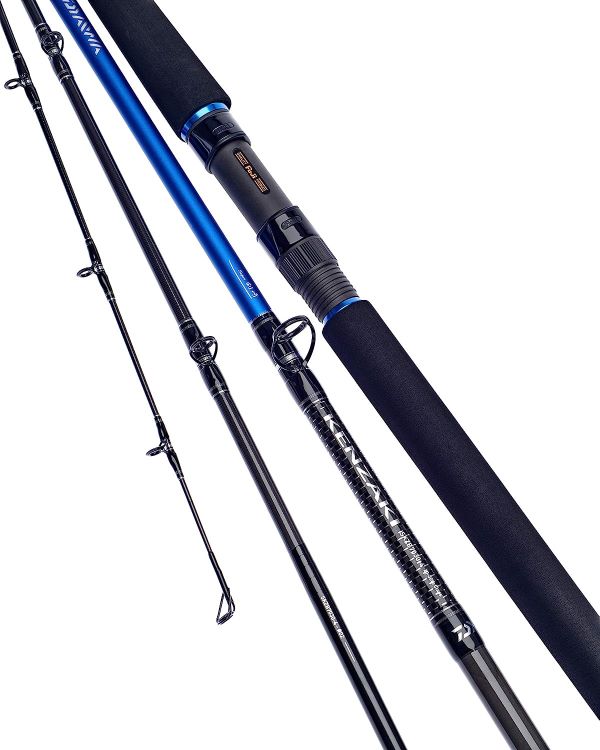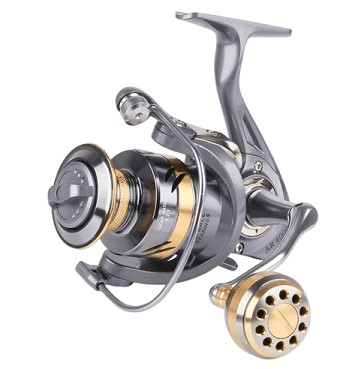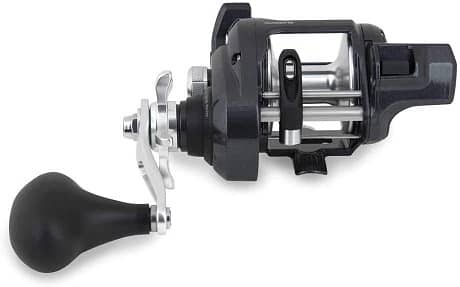Sea fishing is a popular activity in the UK, with hundreds of thousands of anglers taking to the coastlines to catch a wide variety of fish. To have a successful fishing trip, it’s vital to have the proper gear.
In this article, we will explore gear needed in the UK.
Fishing Rods

Fishing rods are a key piece of equipment for any angler. They come in a wide range of lengths, materials, and designs, each with its own unique characteristics and advantages. Choosing the right rod for your intended use is crucial to maximise your fishing experience and increase your chances of success.
Here are some of the factors to consider when choosing a fishing rod for different uses:
- Length: Fishing rods come in various lengths, ranging from 4 feet to 14 feet or more. The length of the rod determines the distance you can cast and the amount of leverage you have when reeling in a fish. Shorter rods are ideal for angling in tight spaces or for small species like panfish, while longer rods are better suited for casting in open water or for targeting larger species.
- Power: The power of a rod refers to its strength and ability to handle different types of fish. Power is usually classified as ultra-light, light, medium, medium-heavy, or heavy. Lighter rods are ideal for small species, while heavier rods are better suited for larger species that require more force to catch.
- Action: The action of a rod refers to how much the rod flexes or bends when you apply pressure to the tip. It is classified as slow, medium, or fast action. Slow action rods bend significantly, making them ideal for catching small or slow-moving fish. Fast action rods bend less, making them ideal for catching larger, faster species.
- Material: Rods can be made from a variety of materials, including graphite, fiberglass, and composite materials. Graphite rods are lightweight and sensitive, making them ideal for detecting bites and feeling the movements of the fish. Fiberglass rods are more durable and flexible, making them ideal for casting heavy lures or angling in rough water.
- Design: Fishing rods come in various designs, such as spinning, casting, and fly rods. Spinning rods are the most popular and versatile type of rod, suitable for both freshwater and saltwater fishing. Casting rods are ideal for targeting larger fish species, and fly rods are designed for fly fishing, a technique where an artificial fly is used as bait to attract fish.
Selecting the right rod is important to maximise your angling experience. Whether you’re a beginner or a seasoned angler, understanding the different factors to consider when choosing a rod will help you select the best one for your intended use and increase your chances of catching fish.
Check Out Our Reviews
Fishing Reels
Fishing reels are mechanical devices that are attached to a rod and used to retrieve the line and fight fish. There are several different types of reels available, including fixed spool reels and multiplier reels, each with their own advantages and disadvantages.
Fixed Spool Reels

Fixed spool reels, also known as spinning reels, are a popular type of reel used for shore fishing in the UK. They are easy to use and offer good casting distance and accuracy. The fixed spool reel has a stationary spool and a bail arm that guides the line onto the spool. The spool rotates during the cast, allowing the line to be released. Fixed spool reels can be used for a variety of angling styles, including lure, bait fishing, and surfcasting.
One of the main advantages of fixed spool reels is their ease of use. They are simple to cast, making them an ideal choice for beginners. They are also lightweight, making them easy to transport, and offer good line capacity, allowing anglers to fish in deep waters. Fixed spool reels also provide good control when fighting fish, allowing anglers to apply pressure to the fish without risking line breakage.
Multiplier Reels

Multiplier reels, also known as baitcasting reels, are a popular choice for boat fishing in the UK. They are designed for casting heavy baits and lures, and for catching larger fish, such as cod or bass. The multiplier reel has a spool that rotates during the cast, and a level wind that guides the line onto the spool. Multiplier reels are more complex than fixed spool reels, and require more skill and practice to use effectively.
One of the main advantages of multiplier reels is their casting distance. They are capable of casting heavier baits and lures further than fixed spool reels, making them ideal for fishing in deep waters or in strong currents. Multiplier reels also offer better control when fighting fish, allowing anglers to apply more pressure without risking line breakage.
However, multiplier reels can be more difficult to use than fixed spool reels. They require a skilled angler to cast accurately and prevent the line from tangling. They are also heavier and bulkier than fixed spool reels, making them less portable.
Summary
There are several types of fishing reels available in the UK, including fixed spool reels and multiplier reels. Fixed spool reels are easy to use, lightweight, and offer good casting distance and accuracy, making them ideal for shore fishing. Multiplier reels, on the other hand, are more complex to use, but offer better casting distance and control, making them ideal for boat fishing and catching larger fish. The type of reel used will depend on the fishing style and target species, but with practice and experience, anglers can become proficient in using both types of reels effectively.
Check Out Our Review
Fishing Line
Line is one of the essential components of fishing gear, and choosing the right type of line is crucial for a successful angling experience. Lines come in different materials, sizes, and strengths, and the type of line you opt for will depend on the conditions and the type of fish you’re targeting.
Here are some of the most common types of fishing lines and their uses:
- Monofilament Line: Is a popular type of line used by anglers of all skill levels. It is a single strand of nylon that is easy to handle and has some stretch. It is versatile and can be used in a wide variety of angling situations, from freshwater to saltwater. It is best suited for fishing in clear water where fish may be easily spooked by visible lines. The line’s stretch also makes it ideal for hooking and landing fish, as it can absorb sudden impacts.
- Braided Line: Is a type of line made by weaving together several strands of synthetic fibres. They are thin, strong, and have little to no stretch, making them ideal for fishing in deep water or with heavy lures. The lack of stretch also makes it easier to detect bites and set the hook. Braided lines are popular among anglers who fish for larger species such as bass, pollack, and cod.
- Fluorocarbon Line: Is a type of line made from a single strand of fluoropolymer material. It is highly resistant to abrasion and is virtually invisible underwater, making it an excellent choice for angling in clear conditions. They have low stretch and excellent sensitivity, making it easier to detect even the slightest bites. It is popular among anglers who fish for trout, bass, and other freshwater species.
Choosing the right line is important for a successful fishing trip. Understanding the different types and their uses will help you select the right one for the conditions and species you’re targeting. Monofilament lines are versatile and work well in a wide variety of fishing situations, while braided lines are ideal for deep water fishing or heavy lures. Fluorocarbon lines are best for fishing in clear water conditions.
Fishing Hooks
Fishing hooks come in various sizes, shapes, and styles, and each type is designed for a specific purpose.
Here are some of the most common fishing hook types and their uses:
- Aberdeen Hooks: These hooks have a long shank and a small, fine wire that makes them ideal for catching smaller fish, such as panfish and trout.
- Baitholder Hooks: These hooks have a barb at the shank’s base, making it easier to hold the bait in place. Baitholder hooks are a popular choice for catching bottom-dwelling fish, such as catfish and carp.
- Circle Hooks: Circle hooks are designed to reduce the chance of gut-hooking fish, making them a popular choice for catch-and-release fishing. They are commonly used for fishing with live bait, such as squid, shrimp, and minnows.
- Jig Hooks: These hooks are designed to be used with a jighead, which allows the angler to control the movement and action of the bait. Jig hooks are commonly used for catching bass, walleye, and other predatory fish.
- Treble Hooks: These hooks have three points and are commonly used for catching larger fish, such as muskie, pike, and salmon. Treble hooks are often used with lures, such as crankbaits and spoons.
- Worm Hooks: These hooks have a wide gap and a curved shank, making them ideal for fishing with soft plastic baits, such as worms and grubs. Worm hooks are commonly used for catching bass, trout, and other freshwater fish.
- Octopus Hooks: These hooks have a short shank and a wide gap, making them ideal for catching smaller fish, such as crappie and bluegill. Octopus hooks are often used with live bait, such as worms and minnows.
- Siwash Hooks: These hooks have an elongated eye and a narrow shank, making them ideal for use with lures, such as spoons and spinners. Siwash hooks are commonly used for catching salmon, steelhead, and other species of fish that feed on smaller baitfish.
When choosing a hook, it’s important to consider the type of fish being targeted, the size of the bait being used, and the fishing technique being employed. It’s also essential to choose a hook that is strong enough to handle the fish being targeted and sharp enough to penetrate its mouth or body. By selecting the right hook for the job, anglers can increase their chances of success and make their angling trip more enjoyable.
Bait
Bait is an crucial element of any fishing excursion, as it’s used to attract fish to the hook and entice them to bite. There are several types of bait available, and the choice of bait depends on the type of fishing and the species of fish being targeted.
Live Bait
Live bait is a popular choice for many anglers, as it can be highly effective in attracting fish. Some common types of live bait include worms, sandeels, and maggots. Live bait can be used for a variety of angling styles, including shore and boat fishing. One of the benefits of using live bait is that it’s natural, and the movement of the bait can help to attract fish to the hook. However, live bait can be challenging to store and transport, and it may not be legal to use in all fishing locations.
Artificial Lures
Artificial lures are another popular choice for anglers, as they can be used to mimic the movement of natural prey and attract fish. There are different types of artificial lures available, including soft plastics, hard baits, and jigs. Soft plastics are made of a synthetic material and come in different shapes and sizes, mimicking the movement of natural prey. Hard baits are made of wood or plastic and are designed to mimic the appearance of natural prey. Jigs are a type of lure that consists of a hook and a weighted head, making them ideal for fishing in deep waters.
Groundbait
Groundbait is a mixture of ingredients, such as breadcrumbs, grains, and fishmeal, that is used to attract fish to the angling location. Groundbait can be used for a variety of fishing styles, including shore and boat fishing. It can be used to attract fish to the surface or the bottom of the water, depending on the type of groundbait used. One of the benefits of using groundbait is that it can help to keep fish in the area, increasing the chances of catching them. However, it can be time-consuming to prepare and may not be legal to use in all fishing sites.
Natural Baits
Natural baits, such as cheese or bread, can be effective in attracting fish, especially in freshwater locations. However, they may not be as effective in saltwater locations, as the scent of the bait can be quickly dispersed in the currents. Natural baits are often used for fishing for species such as carp or bream, and they can be readily available and easy to store and transport.
In conclusion, there are different types of bait available, and the choice of bait depends on the type of angling and the species of fish being targeted. Live bait, artificial lures, groundbait, and natural baits are all popular options for anglers. Experimenting with different types of bait can help to find what works best for different fishing styles and locations.
Conclusion
Having the proper sea fishing gear is crucial to a successful angling trip. Fishing rods, reels, line, hooks, bait, and rig setups are all crucial components of sea fishing tackle. The type of gear needed depends on the type of fishing and the size of the fish being targeted. With the right gear, sea fishing in the UK can be a rewarding and enjoyable activity.
